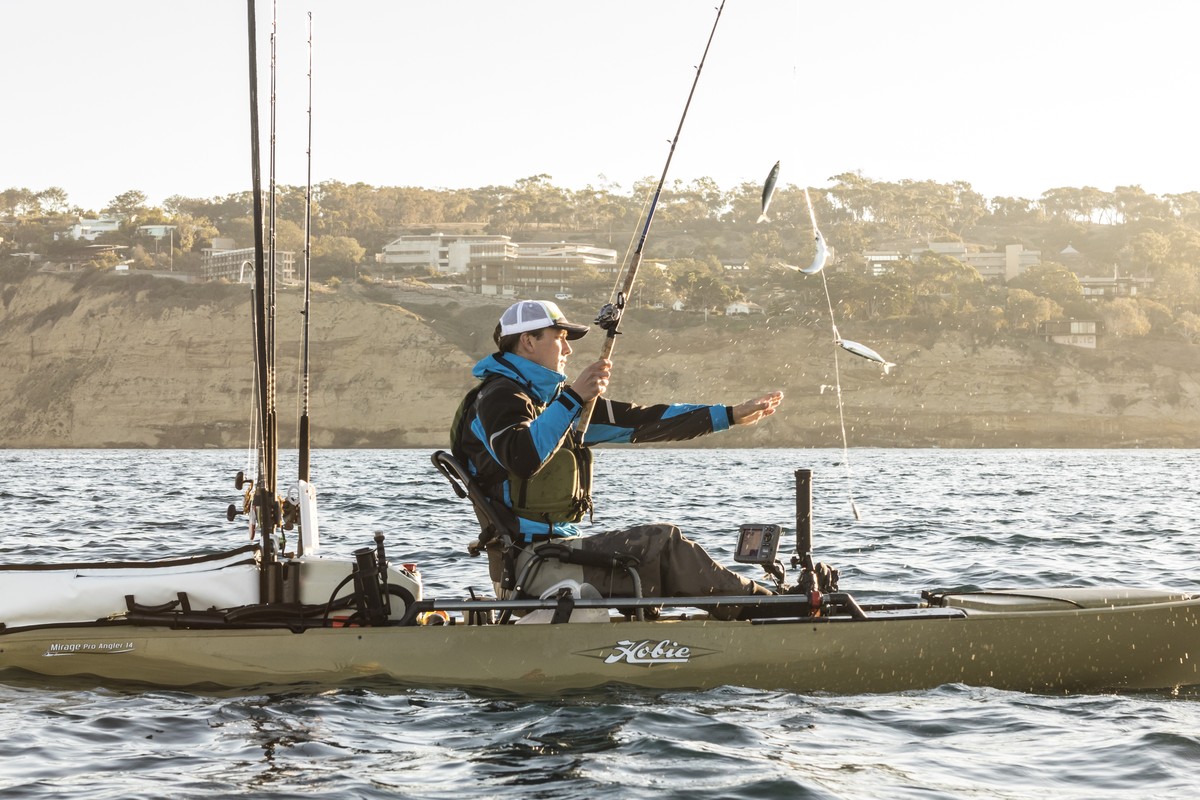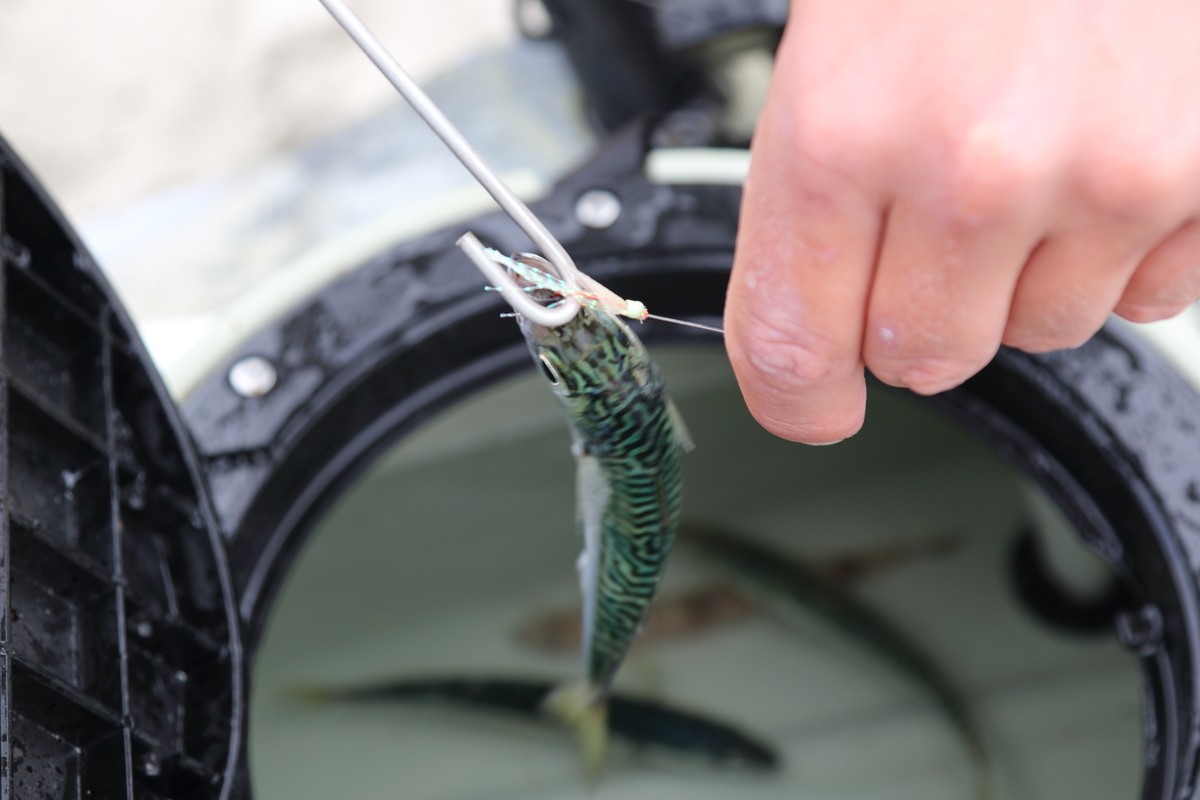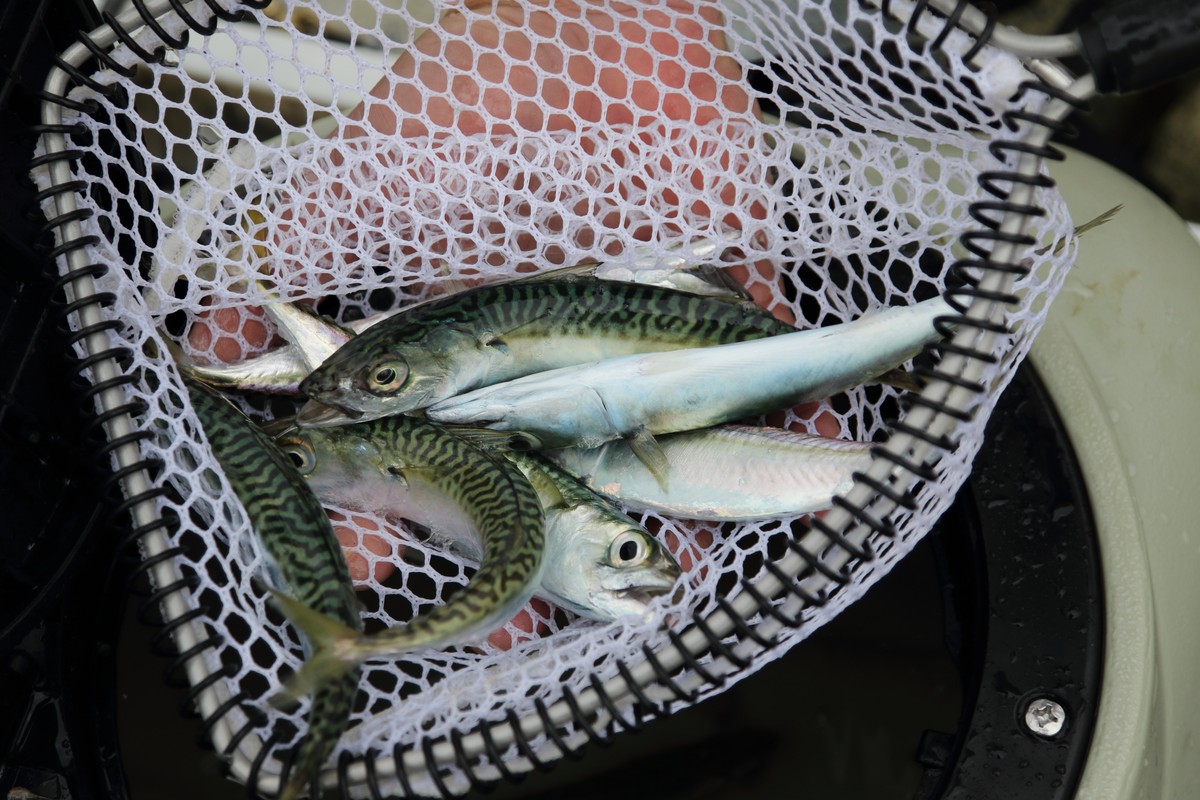
In Southern California, offshore Florida, and off Hawaii, anglers must often catch their own live bait. Here’s a set of tips from Hobie Fishing Product Manager Morgan Promnitz to help you get it done more efficiently. While these suggestions focus on the techniques used for bait fishing off Southern California, the size and style of the sabiki bait catcher rigs can be adjusted depending on the bait you need to make. Take it away, Morgan.
I call it getting wiser with age.
Go Big: My go-to sabiki is a size 6 for strength and longevity. The main line is 30-pound; the branch line is 20. Why? I don’t think baitfish are line shy. The thicker line is much harder to tangle and easier to untangle because it is more stiff than thinner line. I think it may help the sabiki flies to stick out straighter in the water. There’s a fourth reason, abrasion resistance. If I have some bycatch such as a bonito, it won’t break the sabiki fly off. I’ll even go up to a number two sabiki if I’m trying to catch really big mackerel for white seabass.
Go Long: I use a heavy rated 7-foot 6-inch St. Croix rod with a cork grip. Sometimes I use an 8-foot rod. The extra rod length ensures there are no issues with length of the sabikis, and keep me from winding my swivel into my tip guide. Most sabikis are a little over 6 feet long. Bonus tip: I use 65-pound braid main line and a 4-foot fluorocarbon leader above my sabiki. When I’m done making bait for the day, I take my sabiki off and clip a surface iron or plastic on there. Then I have a lighter rod for fishing artificials.

Don’t Mess Around: I fish a very tight drag and bring the bait fish into my kayak as quickly as possible. You don’t want to be sitting there with a light drag fighting your bait. Catching bait is fun but it can’t be too much fun.
Weighty Considerations: I replace the clip on the sinker side of the sabiki with a Tactical Anglers Power Clip so I can quickly change the torpedo sinker. My go-to is usually a two- to three-ounce sinker, but if I’m catching a full stringer every time I’ll switch to the heaviest weight I have, as much as a 6- or 8-ounce. It prevents the baitfish from swimming into a tangle.

Touch Free: Make or buy a bait release. By avoiding touching my bait before it goes into the Livewell, it stays primo as long as possible. Healthy bait acts better in the water. When it’s time to fish, use a bait net to capture the bait in your tank more easily. When you have 50 baits, and 40 bigger ones and 10 are smaller ones, having a net helps you catch the bait fish you want. It’s a real time saver.

Glove Up: If you don’t have a bait release and need to handle your baits to transfer them into the live well, invest in a good pair of gloves. It prevents you from getting spines in your fingers.
Get the Most Out of Your Sabiki: When you’re done for the day, rinse your sabiki with freshwater. Don’t store a sabiki inside a Sabiki Stick rod. Saltwater condenses inside, causing the sabiki hooks to rust. Air them out and you’ll get several trips out of each one.